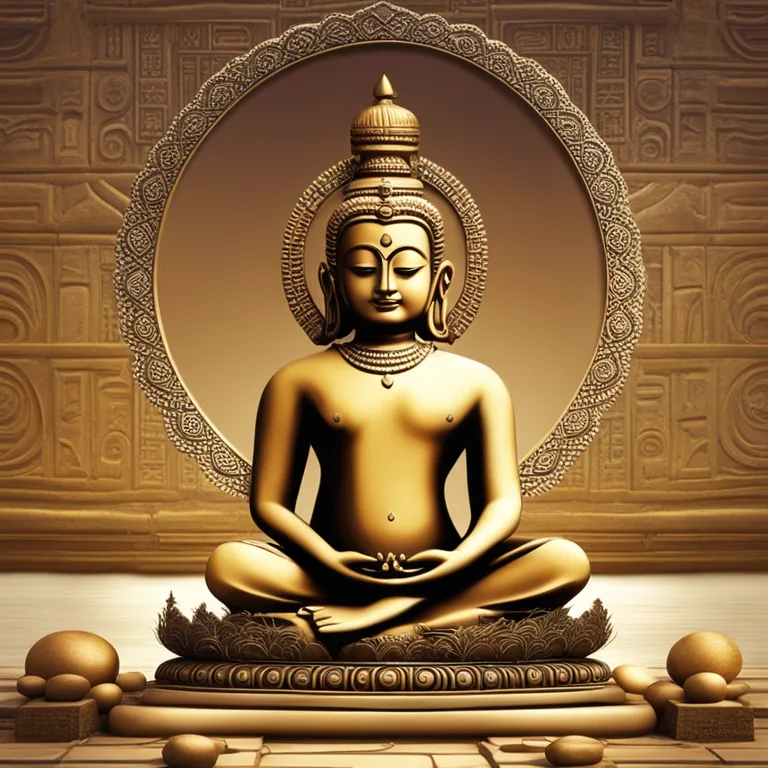
Jain Meditation Techniques: A Guide
Discover transformative Jain meditation practices for achieving tranquility and spiritual enlightenment in this comprehensive guide.
article by Hina Kurosawa
Introduction to Jain Meditation
Jainism is an ancient Indian religion that emphasizes a path of non-violence and spiritual interdependence. Meditation is a core practice in Jainism, aimed at realizing the nature of the soul and achieving spiritual liberation. Jain meditation, also known as "Samayika," encourages practitioners to attain a state of mental equilibrium and detachment from worldly affairs. This form of meditation is deeply rooted in the Jain philosophy of self-discipline, self-purification, and the realization of self-soul.

Pre-Meditation Preparation
Before diving into meditation, Jains believe in preparing the mind and body. This preparation involves adopting a peaceful and secluded environment, cleansing the body, and donning simple, comfortable clothing. It is also essential to engage in Pratikraman, a practice of introspection and repentance, to shed karmic particles that cloud the soul. The goal is to approach meditation with purity, humility, and focused intent, laying a solid foundation for contemplative practices.

Principles of Jain Meditation
The bedrock of Jain meditation is self-awareness and the pursuit of enlightenment. Practitioners focus on principles such as 'Anekāntavāda', the many-sidedness of reality, and 'Syādvāda', the relativity of truth. Through meditation, individuals learn to observe the multifaceted nature of existence, thereby fostering tolerance and reducing ego. The act of meditating is also a form of non-violence (Ahimsa), as it promotes peace within the practitioner and spreads serenely outward.

Types of Jain Meditation
Various forms of Jain meditation cater to different spiritual needs. 'Sukla Dhyan' involves concentration on a pure, formless awareness, typically among the spiritually advanced. 'Dharna Dhyan' focuses on reflective contemplation of teachings and scriptures. In contrast, 'Art Dhyan' and 'Raudra Dhyan', which are discouraged, can lead to harmful thoughts and emotions. Hence, practitioners are guided to engage in positive and constructive meditations that align with non-violence and self-betterment.

Techniques of Practice
Common techniques in Jain meditation include focused breathing (Prānāyāma) and Mantra chanting, which help center the mind and eliminate distractions. The use of Mudras, or symbolic hand gestures, is also prevalent, each one signifying spiritual concepts and aiding focus. Visualization is another technique, where practitioners envision the enlightened Tirthankaras or key spiritual symbols to align themselves with divine energy and insight.
The Role of Morality
Adhering to a moral lifestyle is integral to Jain meditation, with a strong emphasis on the five major vows: non-violence, truth, non-stealing, chastity, and non-attachment. These ethical principles are believed to purify the karmic field, enhance the quality of meditation, and ultimately lead to a liberating self-realization. It underscores the intrinsic link between morality and spiritual practices within Jain philosophy.
Jain Meditation in Modern Times
In the contemporary context, Jain meditation has adapted to suit our fast-paced lifestyles without compromising its core values. Modern practitioners often integrate meditation with daily routines, utilizing moments of stillness to reflect and connect. Technology, such as meditation apps and online tutorials, also supports learners in grasping techniques and maintaining regular practice. Even as the world evolves, the timeless essence of Jain meditation remains a beacon for spiritual seekers.
Published: 12/20/2023
Modified: 12/20/2023
More predictions
Come back here soon to learn more about yourself and your future


Hone Focus with Mindful Meditation
Discover meditation techniques that sharpen concentration and elevate mental clarity for a more productive life.


Learning About Meditation Techniques
Discover effective meditation methods to enhance your well-being and spiritual journey.


Korean Meditation Practices for Serenity
Discover the transformative power of traditional Korean meditation techniques and enhance your mental tranquility.